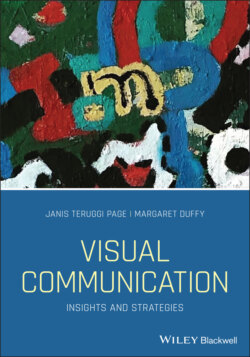Читать книгу Visual Communication - Janis Teruggi Page - Страница 20
Digital Transformation of Visual Culture
ОглавлениеMuch research on digital visual content in the twenty‐first century points to a tsunami of images washing over words. WebDAM, a digital brand consulting firm and data science company, reported that verbal intelligence is dropping while visual intelligence is increasing (Morrison, 2015). Scores in the SAT reading exam hit an all‐time low in 2016 (Kranse Institute, 2017) and three years later, with an increased number of student test‐takers in 2019, SAT reading scores again fell nationally. Research surfacing in many parts of the world now cautions that essential “deep reading” processes may be under threat as we move into digital‐based modes of reading (Wolf, 2018): essentially “skimming” with low engagement and retention.
But we're incredible at remembering pictures, writes biologist John Medina (n.d.) in his multimedia project Brain Rules. Three days after hearing information we may remember 10% of it but add a picture and memory increases to 65%. Thanks to the digital revolution, visuals have become a universal language. A whopping 82% of all Internet traffic globally will be video by 2022, estimates Cisco (2019), up from 75% in 2017 – and virtual reality (VR) and augmented reality (AR) will increase 12‐fold globally between 2017 and 2022.
Instagram had one billion monthly active users in 2018 according to TechCrunch (Constine, 2018). That same year, the total number of photos shared in the platform's history was recorded at more than 50 billion. Dating apps like Tinder and Friendsy make it easy (some say too easy) to exchange photos with others and find romance. When it comes to the essential organizational website, research suggests that well‐designed and highly visual sites are more trustworthy than poorly designed sites (Harley, 2016).
Members of Generation Z, those born in 1996 and later, are even more visually oriented than the much‐discussed Millennials, those born between 1980 and 1985 (Williams, 2015). Research on Gen Z finds that 44% play video games daily and 72% visit YouTube daily (Claveria, 2019). Advertisers and media companies are responding to shifts toward the visual by redesigning their communication on big and small screens. On the so‐called “visual web,” brands and news organizations have moved to image‐based content creation. The massive use of mobile is a major driver of these changes as smaller screens are friendlier to visual content than textual.
